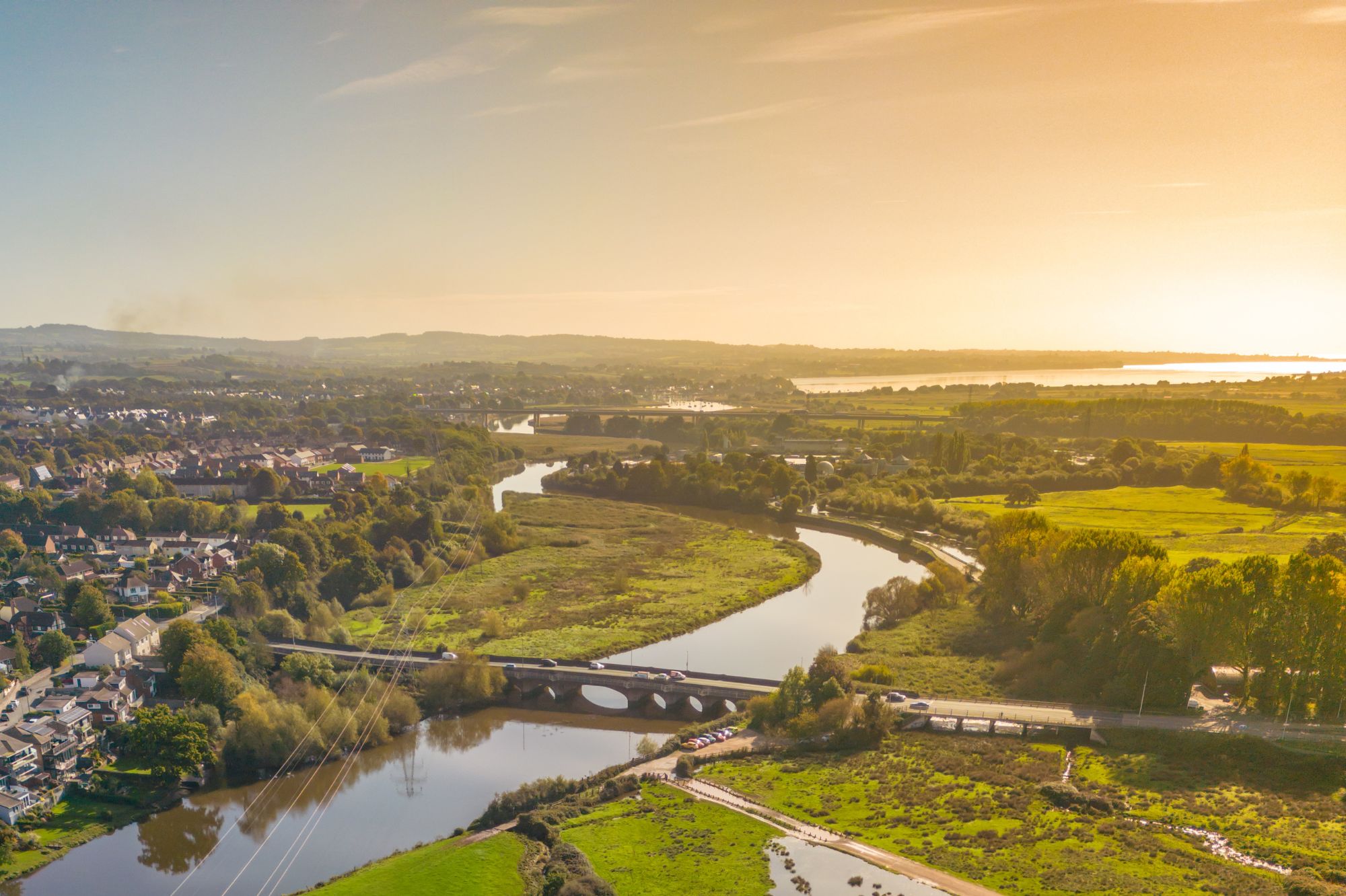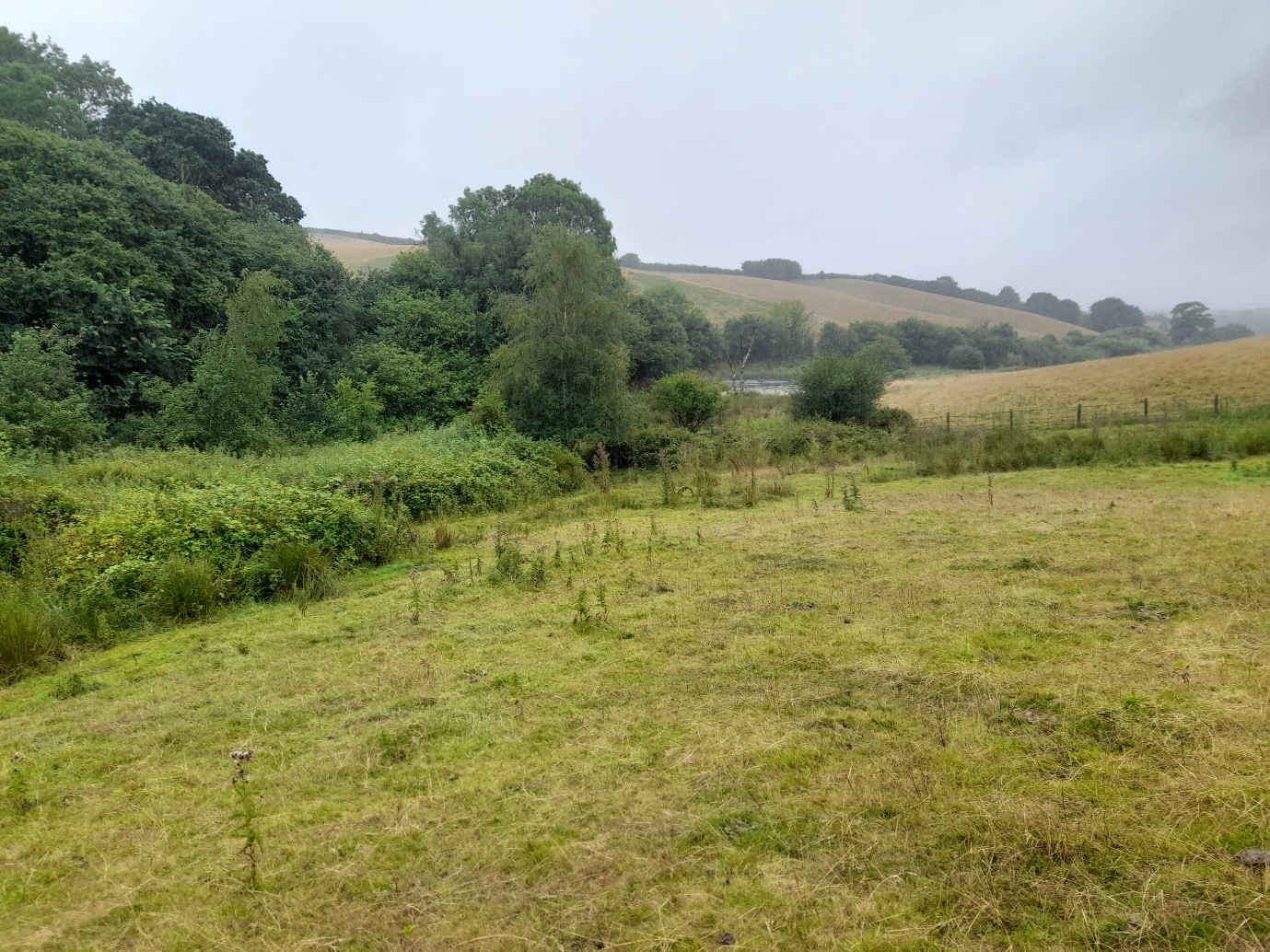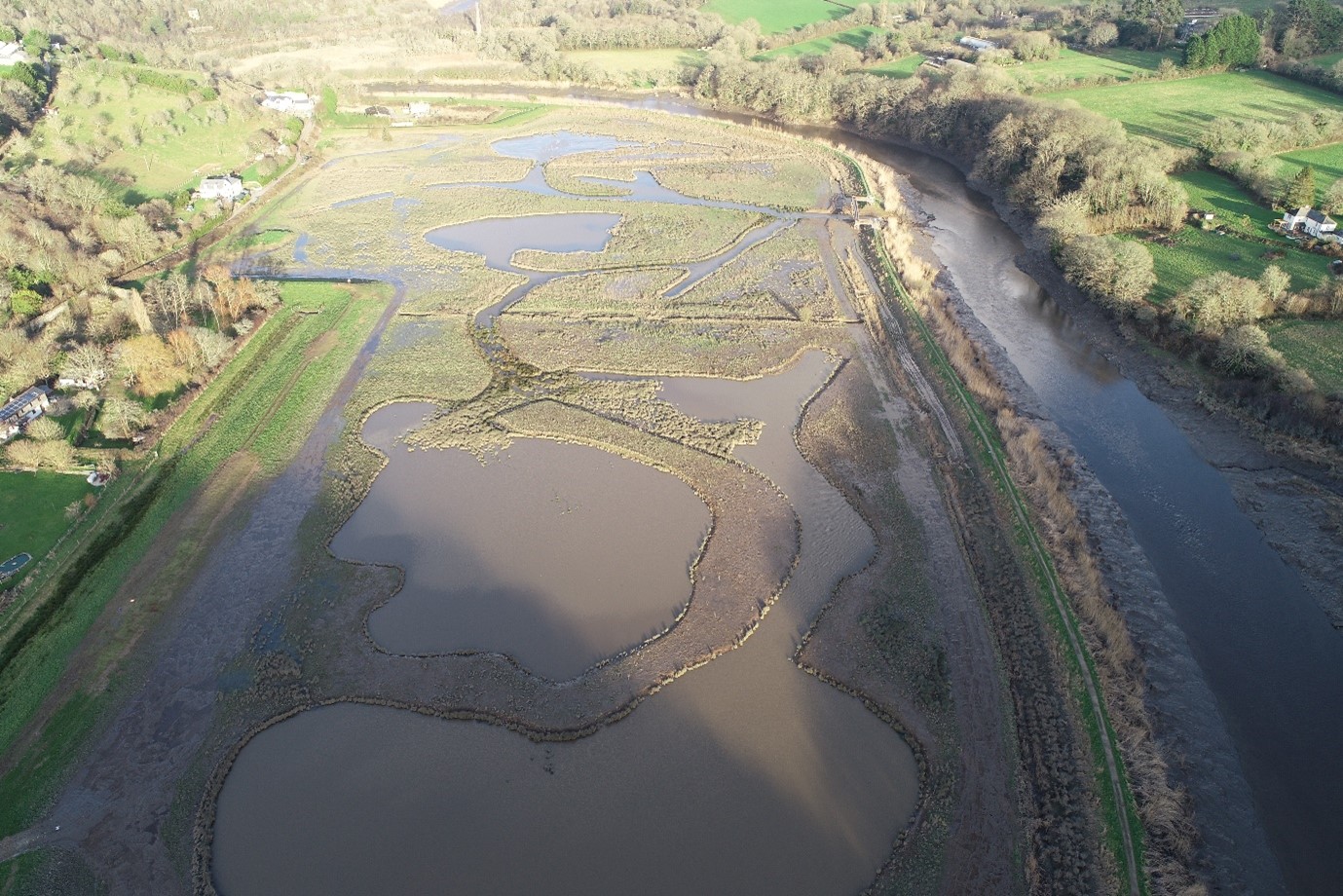Story
The AgZero+ project: our work to protect rivers... and the ocean.
14 March 2024
 Above: Countess Wier Bridge in the River Exe County Park, Exeter, UK. The River Exe flows for 60 miles (96 km) and reaches the sea at a substantial ria, the Exe Estuary, on the south (English Channel) coast of Devon.
Above: Countess Wier Bridge in the River Exe County Park, Exeter, UK. The River Exe flows for 60 miles (96 km) and reaches the sea at a substantial ria, the Exe Estuary, on the south (English Channel) coast of Devon.Despite only covering 0.01% of the Earth’s total surface, freshwater ecosystems like rivers supply essential ecosystem services - such as food, drinking water, energy, and livelihoods - to billions of people. They are also critical for biodiversity across the planet, with a huge number of species relying on these habitats.
But rivers face many threats, including [but not limited to]:
-
Pollution. Rivers suffer from many forms of pollution, including sewage and urban pollution, agricultural pollution, and industrial pollution. In 2022, a House of Commons Committee report on the state of UK rivers concluded that no river in England was free from chemical contamination.
-
Climate change. Climate change poses potential for disaster for rivers at both ends of the scale: with an increasing frequency and severity of both flooding and droughts.
-
Habitat and biodiversity loss. When rivers are healthy, they provide a home to incredible levels of biodiversity. Sadly, since 1970, freshwater species have seen an 83% decline globally.
For this ‘International Day of Action for Rivers’, we felt there was one project in particular that deserved highlighting with thanks to its integrated approach to addressing several of these leading threats felt by our rivers.
AgZero+ is a major five-year £13.8 million research programme, bringing together a community of researchers and farmers to test innovative farming systems - to balance the need to produce nutritious food with reducing greenhouse gas emissions and pollution, while at the same time enhancing biodiversity and soil health (a holistic approach known as ‘net zero+').
AgZero+ Principal Investigator, Professor Andy Rees kindly took some time to share some more information about the exciting project.
“AgZero+ aims to support the UK’s transition towards home-grown food production that is sustainable, carbon-neutral and has a positive effect on nature. Some agricultural practices have become a problem for our environment – but it doesn’t have to be that way. And AgZero+ aims to demonstrate that.”
“Through this project, we’re investigating a multitude of innovative practices to support improved agricultural practices, including riparian buffer zones on farms, re-wetting of lowland peat, wetland restoration by managed realignment and the introduction of beavers, and the effects of these on ‘downstream’ ecosystems along the land-ocean aquatic continuum. I’ll describe some of these practices in more detail below.”
‘Riparian buffer zones...’
“One area of work for AgZero+ includes the investigation of ‘Riparian buffer zones’ on farms. Riparian buffers act to intercept sediment, nutrients, pesticides, and other materials in surface runoff, and reduce nutrients and other pollutants in shallow subsurface water flow.”
“These buffers can be an extremely helpful ally in reducing agricultural runoff, helping to prevent excess nutrients reaching rivers and the ocean. This is important because excess nutrients can cause blooms of microorganisms, during a process known as eutrophication. Eutrophication uses up the oxygen in the water and makes it difficult for other species, including fish and other important microorganisms, to survive.”
 Above: Riparian buffer zone on a farm in the River Exe catchment
Above: Riparian buffer zone on a farm in the River Exe catchment
“Not only that, but these zones also serve to provide habitat and wildlife corridors in these agricultural areas – re-wilding spaces for nature and biodiversity, spaces that may have occupied by agricultural land for some time. And these buffers can also be key to reducing erosion and flooding, by providing stream bank stabilisation.”
‘Re-wetting UK lowland peat...’
“We are also looking at the re-wetting of UK lowland peat. The UK’s agricultural peatlands are highly productive and important for national food security; however these limited areas of lowland peat are being drained by intensive farming cultivation – and in doing also, also releasing huge quantities of carbon dioxide into the atmosphere.”
“It’s vital we protect these areas, not only to reduce greenhouse gas emissions, but to halt nature loss, too.”
‘Land management and wetland restoration...’
“Another area of work as part of the AgZero+ project involves wetland restoration through managed coastal realignment and beaver reintroductions – - both of which offer some potential climate change mitigation.”
“Wetlands have an incredible capability to ‘clean’ the water that flows in and out of it by reducing nutrients, and similarly to Riparian buffers, can help prevent eutrophication.”

Above: Managed realignment on the Tamar estuary.
“We’re currently measuring the efficacy of a nature-based flood-defence improvement scheme at Calstock, Cornwall. This newly created wetland is very much in transition between farmland and estuarine marsh.”
“To date, this system has seen some loss of carbon through the production of carbon dioxide and methane, though over time it is expected that it will stabilise and gaseous loss will reduce as solid carbon is trapped and locked into the marsh sediments.”
“As the intertidal wetland develops it should provide a range of environmental benefits that will help address the climate emergency, biodiversity crisis and deliver against the objectives of the government’s 25-year environmental plan.”
“All of these innovative practices being undertaken through AgZero+ are backed by science,” Andy continues, “and I’d like to describe some of the research underpinning the work being done here.”
“Land management and innovative farming is connected to the catchment, estuary and coastal zone by waterways.”

Above: Waterways (red), reservoirs (blue) and AgZero+ sampling stations (dots) along the River Tamar – English Channel aquatic continuum.
“This connectivity is apparent in long-term observations in the English Channel, 10 km south of Plymouth, where we observe a reduction in the salt-content of seawater and simultaneous increase in nutrients during periods of prolonged rainfall on land and high river runoff.”
“Catchment-wide water sampling is a vital component of the our work aimed at understanding and managing aquatic ecosystems. This systematic approach involves the collection of water samples from various points within a catchment area, from river to coast, to assess and monitor a range of critical parameters. These parameters include surface water greenhouse gas concentrations, carbon chemistry, DNA, and nutrient levels.”

Above: Professor Andy Rees (centre), with Ian Brown (left) and Jasmin Dorinda (right) pictured on a sampling trip on the Tamar Estuary.
“But, we’re not just measuring what’s happening in the water. Our team are also investigating the impacts of agriculture on air quality by monitoring a number of gases - including nitrous oxide, ammonia and methane - at the Penlee Point Atmospheric Observatory.”

Above: Atmospheric ammonia concentration during 2022
We’d like to thank Andy for sharing this update with us on International Day of Action for Rivers. Stay tuned for further updates!
You can find out more about the AgZero+ project here, and also discover our work in the ‘Source to sea’ Action Platform for Source-to-Sea Management here.
Related information
AgZero+ is jointly funded by the Natural Environment Research Council (NERC) and the Biotechnology and Biological Sciences Research Council (BBSRC) and led by the UK Centre for Ecology & Hydrology (UKCEH) which works alongside PML, Rothamsted Research, the British Geological Survey and the National Centre for Earth Observation.
Other partners include the Agriculture and Horticulture Development Board, the NFU, the Agricultural Industries Confederation, RSPB, National Trust, Natural England and Defra.
AgZero+ builds on the success of the £12 million ASSIST (Achieving Sustainable Agricultural Systems) project, which addressed the challenge of feeding a growing population by making food production more efficient and resilient to climate change, and reducing agriculture’s environmental footprint.